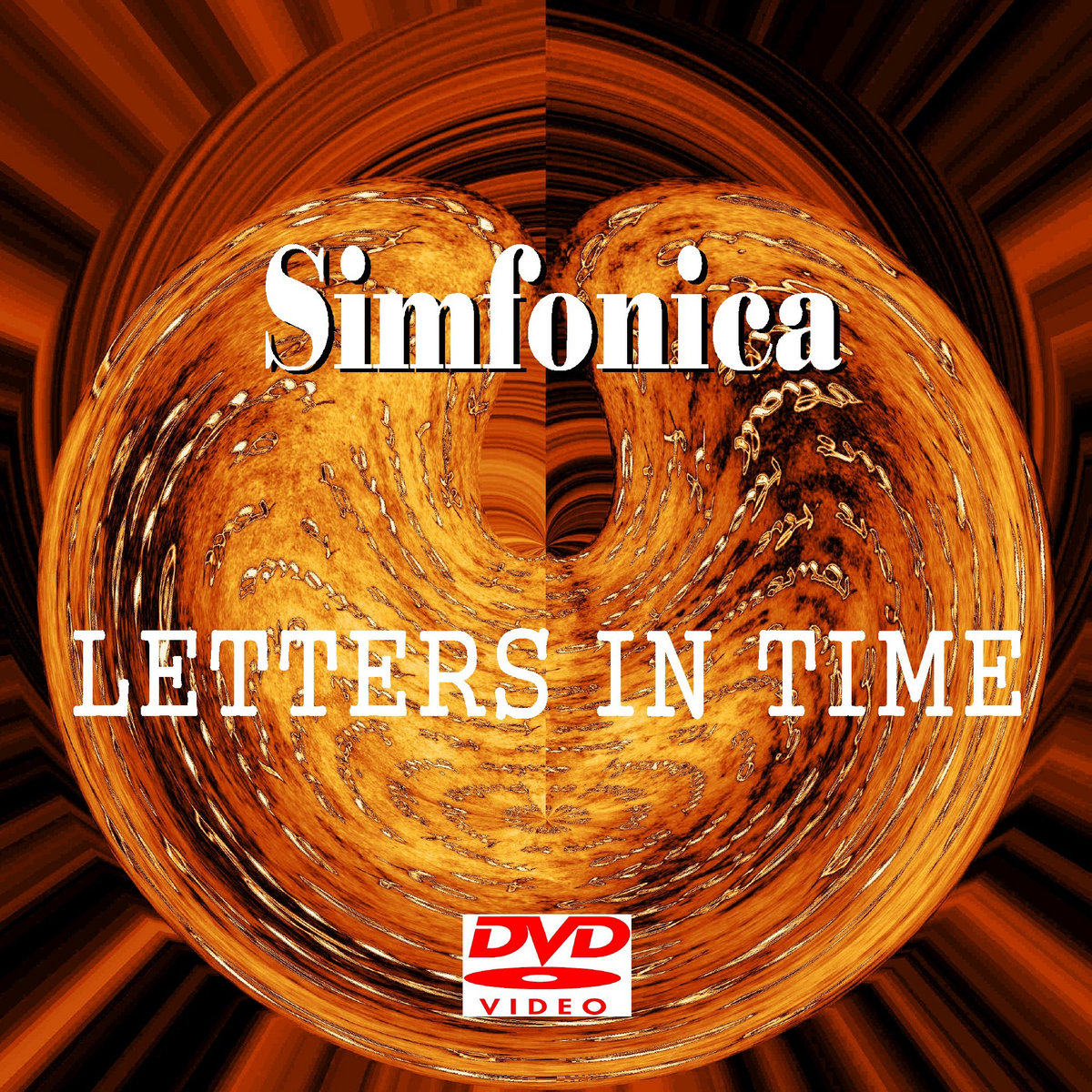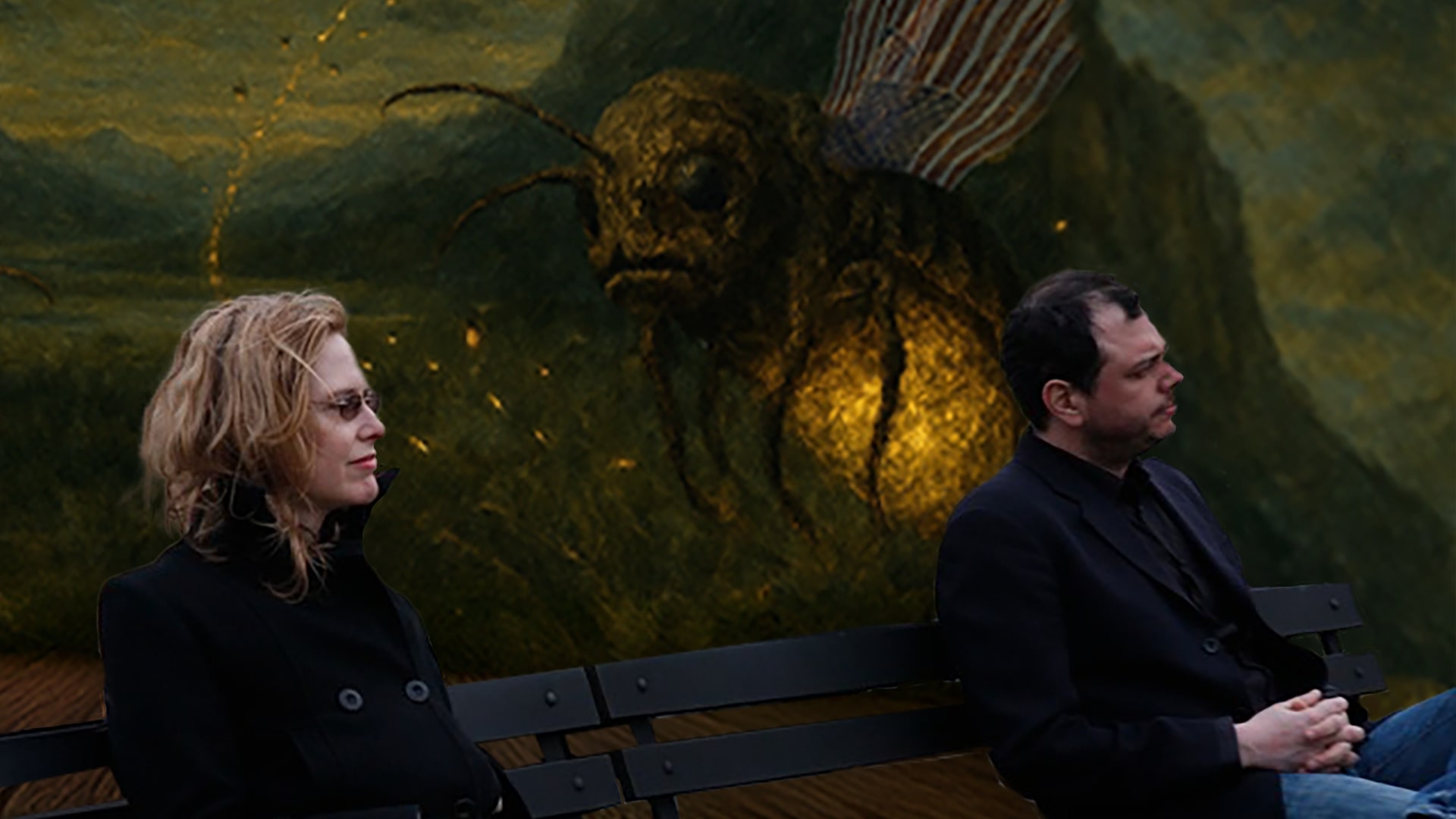Simfonica – ‘Letters In Time’ (2017)
Just released is a fascinating new audio DVD by Trevor Midgley, known to John Peel and Dandelion record fans as Beau and before that on the BBC as one of The Raiders.
This new release of electronic music as Simfonica follows last year’s Song Of The Volcanoes on Cathedral Transmissions, which soon sold out though still available in download format.
It is rare in music for a follow-up to go further than the last release, but here it does regarding concept and artistry. For music shops (if they still exist) and libraries (ditto), it can be conveniently filed under the categories of Ambient, Electronic and/or Experimental, but also Modern Classical because every note is played by him—nothing is sampled—recorded in Mr. Midgley’s own TM studio in Norfolk, England. This project combines various forms of aesthetics in a rare audio-visual work of art.
Letters In Time might also be extended to include….And Space. Each of the four pieces is inspired by momentous moments in fairly recent history that shaped the age we live in. The erudite Trevor Midgley’s albums as Beau regularly feature historical events, especially those touching the human condition rather than the syllabus spoon-fed to us at schools. The locations are France, America and England twice, but that’s less relevant because these subjects involve universal themes and transcend mere location.
J’Accuse (I Accuse) starts visually with the text from Émile Zola’s open letter, on a newspaper’s front page, to the President of the French Republic in January 1898. He is speaking out for justice and truth regarding a scandal that tore France apart in the 1890s and beyond, as the backdrop was the lost war with Germany in 1871 reverberating into the First World War in 1914. Just about every family in France was split by the state’s accusation that Jewish career-officer Captain Dreyfus was a German spy. The case of framing him started in 1894 before he was sent to solitary confinement on Devil’s Island. After publication, Zola had to flee France and lived in Wimbledon and Surrey incognito (his helper and English translator, Vizetelly, had also been imprisoned earlier for publishing Zola).
Dreyfus wasn’t pardoned until 1906, after the real culprits in the military had finally been arrested. The anti-Semitic affair didn’t end there. A Parisian left-wing newspaper in the 1950s published a statement by a chemist who claimed a chimney-sweep told him he’d been paid to block Zola’s chimney at his Paris flat after returning from his country residence at Meudon. Zola died of smoke inhalation that was originally presumed to be accidental in 1902. The DVD artistically plays with images such as contemporary press cartoons and court scenes swirling into abstract, sometimes psychedelic images suggesting the chaos that the scandal caused in society at the time along with far-reaching consequences fifty years later and since.
A pointing finger suggests it could happen to any of us: the mechanisms of the powerful used against others is as relevant today as then. A state can do (and does) whatever it wants to its inhabitants irrespective of rights, truth or justice. Look at modern-day whistle-blowers, the descendants so to speak of Zola or William Cobbett. Simfonica also accuses! The drones have swashes of musical colour perfectly fitted to both imagery and meaning. Not feeling like 17 minutes, occasional subtle sounds like a period funfair add to the atmosphere in what is a haunting, fugue-like embrace of symbol, time and ultimately universality engendered by one place and moment.
The concept of significant letters symbolic of then and relevant now is continued with From A Birmingham Jail, reflecting on a 1963 letter by the civil rights activist Martin Luther King. Lake and swamp scenes move into the forest where trees stand like sentinels reflected in the water, then replicate prison bars with King inside looking out. A sound reminiscent of Pan pipes is joined to subtle percussion, as if Nature too has its menaces. A rally crowd appears, ethereal as ghosts among sigh-like voices, a moving element even more pronounced on A Soldier’s Declaration, an anti-war letter from a serving officer among the carnage. Written in 1917, it was afterwards printed in The Times.
This is the First World War poet Siegfried Sassoon’s letter to the generals and government criticising them for not ending that “evil and unjust” industrial slaughter of 18 million during its 1,568 days, the screen reminds us. They had the power to end “the continuance of agonies” which they do not share and cannot realise, wrote Sassoon there, so why was it continued? The white silhouettes on the battlefield are like a painting or photograph appropriately in negative. The music ‘phases’ like out of life into death or back again if wounded, colours are as if smoke spread over the scene. The bleak music wouldn’t be out of place as accompaniment to looking across the battlefields now, those scarred ghost-filled landscapes that once shook with the horror.
The final piece reflects on Oscar Wilde’s letter known as De Profundis to Lord Alfred Douglas in 1897. Douglas’ father, the Marquis of Queensberry who couldn’t spell very well, was instrumental in getting the poet imprisoned for two years hard labour. The vicious sentence wasn’t cut by even an hour, breaking the Irish-English poet who died not long after in Paris, where he’s buried. The electronics sound like a slow choral lament but also stellar wind among the images of the moon and universe with its Hubble-recorded light swirls. It might be a trope nodding to Wilde’s court retort that the stars are for everyone even though one might be seeing them while standing in the gutter, where Wilde’s bourgeois accusers placed him.
Lonely but also awe-inspiring, it’s as if time has been slowed when experienced by a voyager jettisoned out in the cosmos. Its hypnotic pulse can be felt in the soundscape; a glimpse of Reading Jail is projected with starlight in a cell. A military or judicial drum-beat towards the end is as if recalling the first track’s subject, returning full-circle like history itself sometimes uncannily reminds us.
The near hour-long ambient tripping combined with clear messages, the interplay of sound and image within contextual ideas, provide a very moving total experience. In fact this is a surprisingly rare concept in music, at least in non-classical orchestral music. The marriage of haunting sounds and thought-provoking visuals is here actually more a ménage à trois, an experience broadened by textual history. The modern idioms of sound and image create a most interesting (and poignant) fusion that encourages repeat plays, as well as being a catalyst for further exploration by the sharing experiencer of what is a unique artistic project.
Every DVD also comes with an audio download code for a variety of formats at https://simfonica.bandcamp.com/releases as well as Amazon and eBay. Further information at http://www.trevormidgley.com/Simfonica.html.
Brian R. Banks
Simfonica – Letters In Time (TM Studios TMS001)




